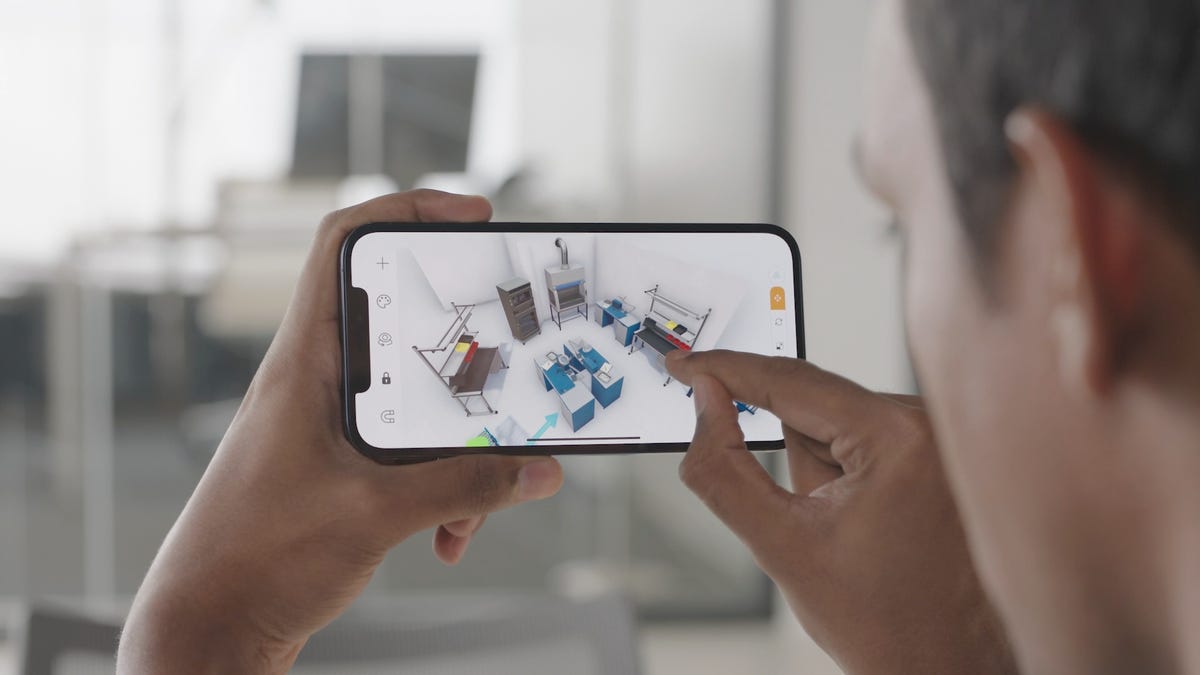The first iPhones with 5G have arrived and, to judge by CNET headlines, the best reasons to buy one of them are either to prevent FOMO, hope for network speeds you may seldom see or to get a MagSafe power connector. Hardly a resounding endorsement to jump right in.
As we (blessedly) round the corner on the last part of 2020, it’s time for a first year report card on 5G for the average phone buyer. Few experts are better suited for that overview than Roger Cheng, executive editor of CNET News, and Eli Blumenthal, a CNET staff writer who focuses on 5G.

The combination of 5G and lidar promise to make the first 5G iPhones breakthrough devices for augmented reality, but no one’s really that excited about AR.
Apple/Screenshot by Sarah Tew/CNET
“I’d give it an incomplete,” says Cheng when asked to grade 5G’s progress in 2020. “There’s still a lot of work to be done on 5G. And we’re in extraordinary times. We’re stuck at home … and the justifications for the tech aren’t really there” as they would have been in a typical year of commuting and mobility.
Along with the 5G has come a radical reformation of the carrier ranks in the US, thanks for the new combination of T-Mobile and Sprint, which are now No. 2 in the market. “One of the big [5G] drivers could be the deals offered by carriers,” Blumenthal says. “You could actually see some real competition from the carriers on making these devices more affordable, subsidizing them to keep you locked into their network.” Cheng says that 5G service shouldn’t cost more than 4G LTE.
A few other things discussed in the interview:
- 5G has many layers, not all of which will be available in the near term.
- A killer app for 5G is still in the offing, yet adoption of it is inevitable, much as with 4K home video.
- In spite of the above headlines, Apple has a unique ability to move 5G forward.
- You can wait to get a 5G phone and service.


Now What is a video interview series with industry leaders, celebrities and influencers that covers trends impacting businesses and consumers amid the “new normal.” There will always be change in our world, and we’ll be here to discuss how to navigate it all.





